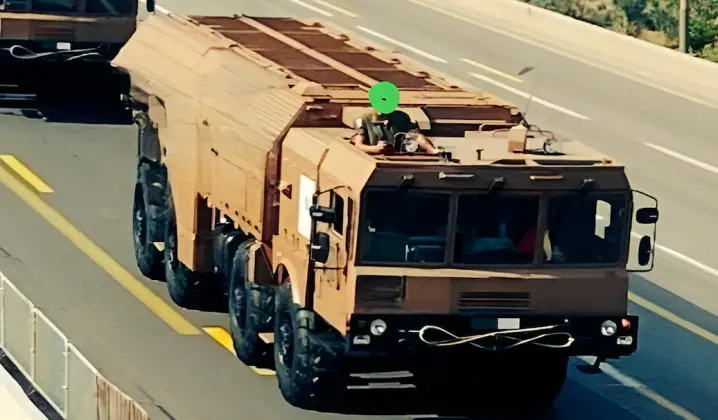<p >Algerian sources have for the first time publicly&nbsp;released images of launchers for Iskander-M ballistic missile systems in the country’s armed forces, over seven years after acquisitions were first made. Algeria is one of four operators of the system alongside Russia, Belarus and Armenia, and was for years the largest operator with 48 launchers in service. With the <a href=" target="_blank">scale of Belarusian acquisitions </a>remains unknown, the Algerian armed forces may well still retain this position. The unveiling of the system comes at a time of high tensions both with NATO member states across the Mediterranean and with neighbouring Morocco, with Algeria’s strong political support for Iran, Palestinian forces and their Middle Eastern allies placing it on an opposing side to Morocco and the Western world. The Iskander represents the most capable class of tactical ballistic missile system in Africa or the Arab world, and is one of several&nbsp;high profile weapons systems <a href=" >acquired in recent years</a>&nbsp;from Russia. Other examples have included S-400 long range air defence systems,&nbsp;<a href=" >several hundred T-90 tanks</a>,&nbsp;<a href=" >Patnsir-SM </a>air defence combat vehicles,&nbsp;<a href=" >Improved Kilo Class </a>attack submarines and <a href=" target="_blank">Su-30MKA </a>and <a href=" target="_blank">MiG-29M fighters</a>.&nbsp;Almost 20 years of intensified investment in acquisitions and training have led the country’s air force to be&nbsp;<a href=" target="_blank">considered the most capable</a> among Arab, African and Muslim-majority states.</p><p ><img src=" title="Missile Launcher From Russian Iskander-M System"></p><p >The Iskander-M is notably no longer considered available for export due to Russia’s requirements for greater numbers of the systems to fight its ongoing war against Ukraine and its <a href=" target="_blank">Western supporters</a>, which makes the systems Algeria fields to a large extent irreplaceable. Algeria has notably <a href=" target="_blank">looked to China</a> for a growing portion of its arms supplies due to both the growing discrepancy in sophistication between Chinese and Russian weapons systems favouring the former, as well as due to Russia’s inability to spare equipment for export other than from its aviation sector. The Iskander-M is closely based on the uncompleted Soviet Oka-U ballistic missile system, and uses a similar semi ballistic depressed trajectory with an ability to conduct extensive in flight manoeuvres throughout its flight path.&nbsp;</p><p >With apogees of around 50 km, the Iskander-M’s 9K720 missiles are not only extremely difficult to detect or track, but can also use their fins to manoeuvre much better than missiles on standard ballistic trajectories.&nbsp;The system has proven highly effective in the Ukrainian theatre, and has been<a href=" target="_blank"> filmed neutralising </a>American MIM-104 Patriot long range air defence systems on <a href=" target="_blank">multiple occasions</a> in some cases <a href=" target="_blank">evading interceptor fire </a>while doing so. The ability to counter the Western Bloc’s most capable weapons has been perceived to be particularly important for Algerian security since&nbsp;<a href=" >NATO’s assault</a>&nbsp;on neighbouring Libya in 2011, with Algiers having&nbsp;continued to perceive a&nbsp;<a href=" >significant threat</a> from Western military activities in its region.</p>
Algeria Unveils Africa’s Most Dangerous Tactical Missile System: How the Iskander-M Guards Against NATO

